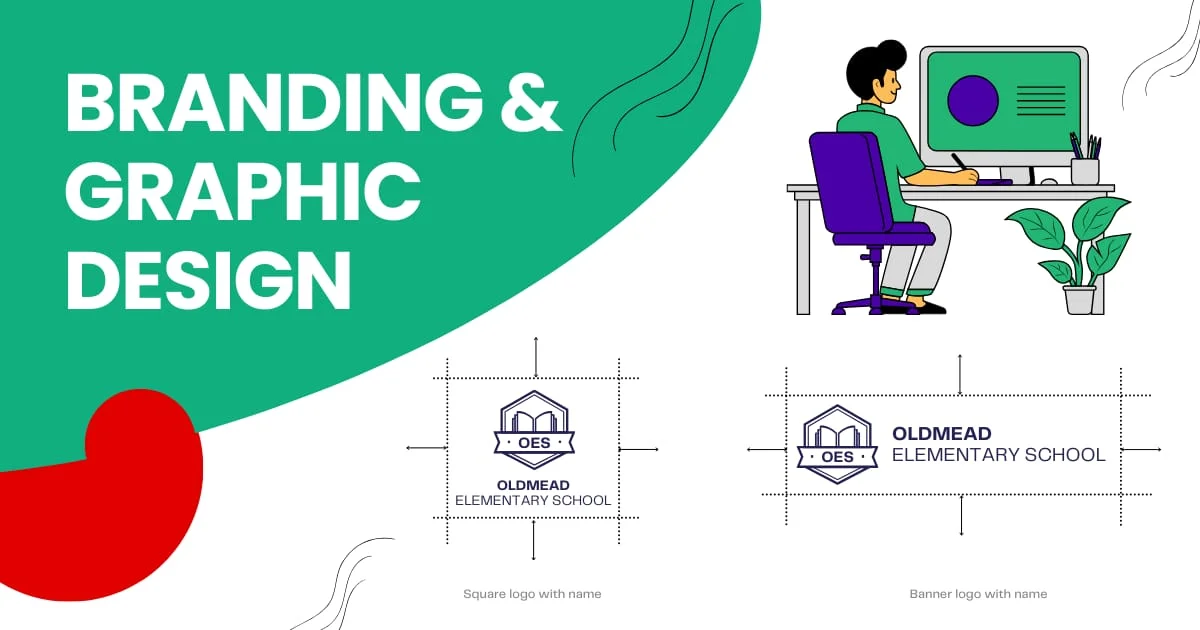Hightech Website 2025-04-26
How Smart Branding & Graphic Design Drive Business Growth in 2025

Introduction
In today’s highly competitive digital age, the convergence of smart branding and cutting-edge graphic design has become a driving force behind successful businesses. As we step into 2025, companies can no longer afford to view design and branding as merely decorative. They are strategic assets that influence how customers perceive value, trust a product, engage with content, and make purchasing decisions.
This essay explores how intelligent branding and compelling graphic design fuel business growth in 2025 by enhancing visibility, building credibility, evoking emotions, and turning customers into brand advocates.
1. The New Landscape of Branding and Design in 2025
In 2025, branding is no longer just about logos and color schemes—it’s about experience, values, and adaptability. Modern consumers seek authentic brands that reflect their beliefs, values, and lifestyle.
Graphic design, on the other hand, has evolved with AI, AR/VR, and motion graphics becoming integral to engagement. Clean, responsive design tailored to devices, demographics, and even real-time behavior now defines the user journey.
Key Shifts:
- Data-driven design decisions using AI analytics
- Inclusive and diverse branding that resonates globally
- Micro-moments and snackable visual content dominating attention spans
- Design built for cross-platform compatibility (desktop, mobile, wearable)
2. What Is Smart Branding?
Smart branding means crafting a strategic identity rooted in research, values, consistency, and adaptability. It combines visuals with story, tone, and purpose to build emotional bonds with consumers.
Core Elements of Smart Branding:
- Brand Purpose: Why do you exist?
- Brand Personality: How do you communicate and behave?
- Brand Positioning: Where do you stand in the market?
- Visual Identity: Colors, typography, logo, imagery
- Consistency: Cohesive experience across all customer touchpoints
A smart brand understands its audience, adjusts to trends without losing its identity, and creates a long-term impression.
3. Graphic Design as a Business Asset
Gone are the days when graphic design was seen as an expense. In 2025, it’s a growth multiplier. Great design impacts how users interpret content, remember brands, and act on messaging.
The Impact of Design on Business:
- First Impressions: 94% of users form opinions based on design within seconds.
- Brand Recognition: Visual consistency increases brand recall by over 80%.
- Engagement: Visual posts get 650% more engagement than text-only ones.
- Conversions: Better UX and UI can increase conversions by 200% or more.
Design isn’t just about aesthetics; it’s about communication, trust, and usability.
4. Emotional Branding and the Role of Visuals
Modern consumers make emotional decisions. Graphic design is the fastest vehicle to tap into those emotions. Shapes, colors, and layout subconsciously influence users’ moods and responses.
Psychology in Design:
- Color Theory: Red evokes urgency; blue creates trust; green reflects health.
- Typography: Serif fonts convey tradition; sans-serif appears modern.
- White Space: Improves readability and reflects sophistication.
- Symmetry and Balance: Evoke feelings of trust and stability.
Using these elements strategically allows brands to tell a visual story that connects and converts.
5. Brand Consistency and Recognition
A consistent brand is a trusted brand. Whether online or offline, across platforms or in emails—if the brand feels the same, users begin to trust and recognize it.
How Design Creates Consistency:
- Same logo, font, tone, and color palette
- Uniform visual elements across social, web, and print
- Branded templates for presentations and documents
- Graphic design that follows a style guide
When branding and design walk hand in hand, companies appear more professional, reliable, and memorable.
6. Smart Branding & Design in Web Development
In 2025, a business website is more than a digital brochure—it’s an interactive platform for storytelling, sales, support, and community building. Graphic design ensures it's visually engaging while branding ensures it's strategically aligned.
Key Areas of Focus:
- Hero Banners that reflect the brand promise
- Interactive Elements (hover effects, sliders, animations)
- Visual Hierarchy to guide user actions
- Consistency with offline branding (store, products, packaging)
Strong graphic design leads to lower bounce rates, longer session times, and higher conversion rates.
7. Branding on Social Media: Visual Identity at Scale
With billions of active users on social media, consistent branding through visuals can build loyalty and boost reach.
Social Media Branding Tips:
- Use the same logo and color scheme across platforms.
- Create branded content templates.
- Add graphic storytelling through carousels, reels, infographics.
- Humanize the brand with lifestyle photos, UGC, and branded memes.
Graphic design makes your brand scroll-stopping and recognizable within seconds.
8. AI & Automation in Design and Branding
Artificial Intelligence is transforming how businesses create and implement branding and design assets.
Benefits of AI Tools:
- Logo generators (e.g., Looka, Tailor Brands)
- Color palette suggestion tools
- A/B testing of visual assets
- Automated resizing and optimization for platforms
AI removes guesswork and helps businesses produce faster, scalable, data-informed designs.
9. Branding in E-Commerce: A Case for Visual Identity
In e-commerce, where customers can't touch or feel the product, branding and visuals are everything. Your images and design set expectations.
Essentials:
- High-quality product images and videos
- Branded packaging design
- UI that reflects the brand tone (fun, premium, eco, etc.)
- Consistent branding across checkout and post-purchase
Customers are more likely to purchase from a brand that “looks” trustworthy.
10. Rebranding & Visual Refresh: Staying Relevant
Smart brands know when it’s time to evolve. A visual refresh can reposition a business, modernize its identity, and reignite customer interest.
Signs You May Need a Rebrand:
- Outdated visuals that no longer appeal
- Change in audience or offerings
- Mergers, acquisitions, or pivots
- Poor engagement across platforms
Rebranding isn’t just a logo change—it’s a strategic overhaul involving storytelling, audience research, and updated visuals.
11. Real-World Success Stories
a. Dropbox
Revamped their design with playful illustrations and vibrant colors—resulting in a refreshed brand personality that appealed to creatives and tech-savvy users.
b. Airbnb
Shifted from a transactional booking platform to a storytelling brand, combining minimalist design with immersive visuals of local experiences.
c. Nike
Continues to dominate by marrying strong storytelling with striking visuals—fueling both emotion and aspiration in their brand experience.
12. Branding as a Culture Builder
Internally, strong branding and visual identity build a sense of purpose and culture. Employees are more motivated when they feel part of a brand that’s modern, well-presented, and aligned with their values.
Use graphic design to:
- Create internal assets like brand manuals
- Make branded presentations and training materials
- Celebrate milestones visually
- Reinforce mission and values in workspaces
13. Measuring the ROI of Branding & Design
Branding and design can feel intangible, but they absolutely impact the bottom line.
Metrics to Track:
- Brand awareness (search volume, mentions, traffic)
- Customer retention and loyalty
- Conversion rates on designed landing pages
- Social media engagement
- Net Promoter Score (NPS)
Modern analytics tools, heatmaps, and A/B testing allow businesses to track how visual elements impact user behavior.
Conclusion: Design Isn’t Optional—It’s Foundational
As the marketplace grows noisier in 2025, standing out will depend not only on what you offer but how you present and position it.
Smart branding and graphic design are not afterthoughts. They’re growth tools that influence perception, elevate value, and drive behavior. From startups to enterprise-level companies, investing in a visual identity that resonates, adapts, and connects is no longer optional—it’s fundamental.
In the end, great branding backed by smart design doesn’t just attract attention. It creates belonging, builds trust, and converts audiences into lifelong customers.


